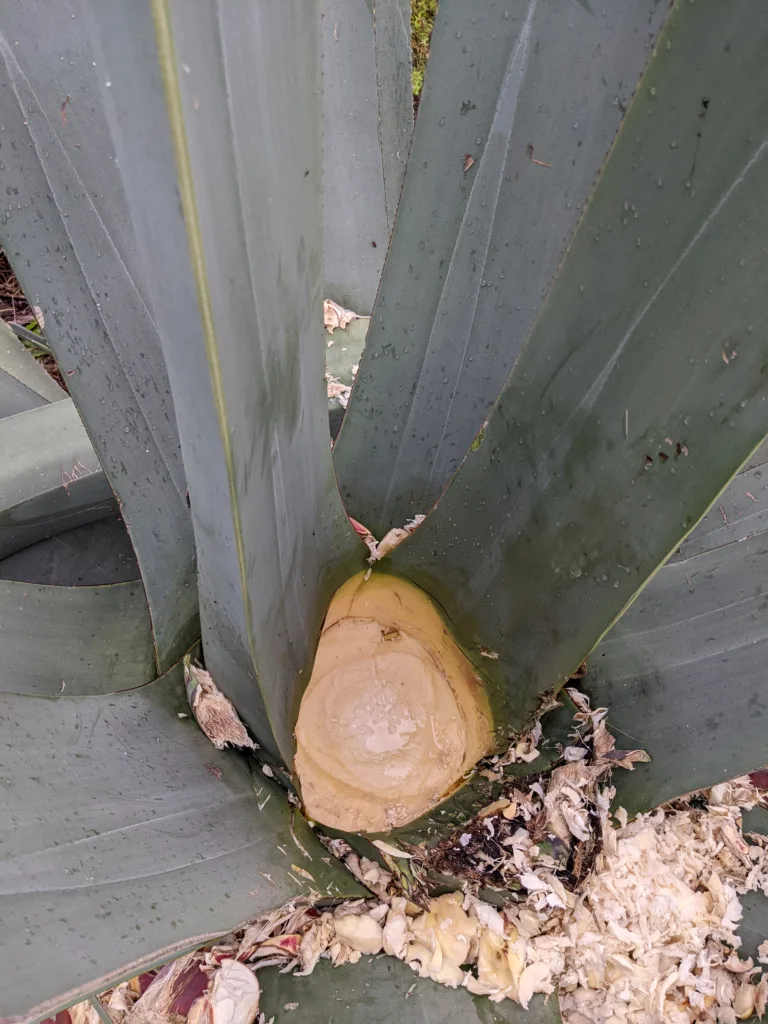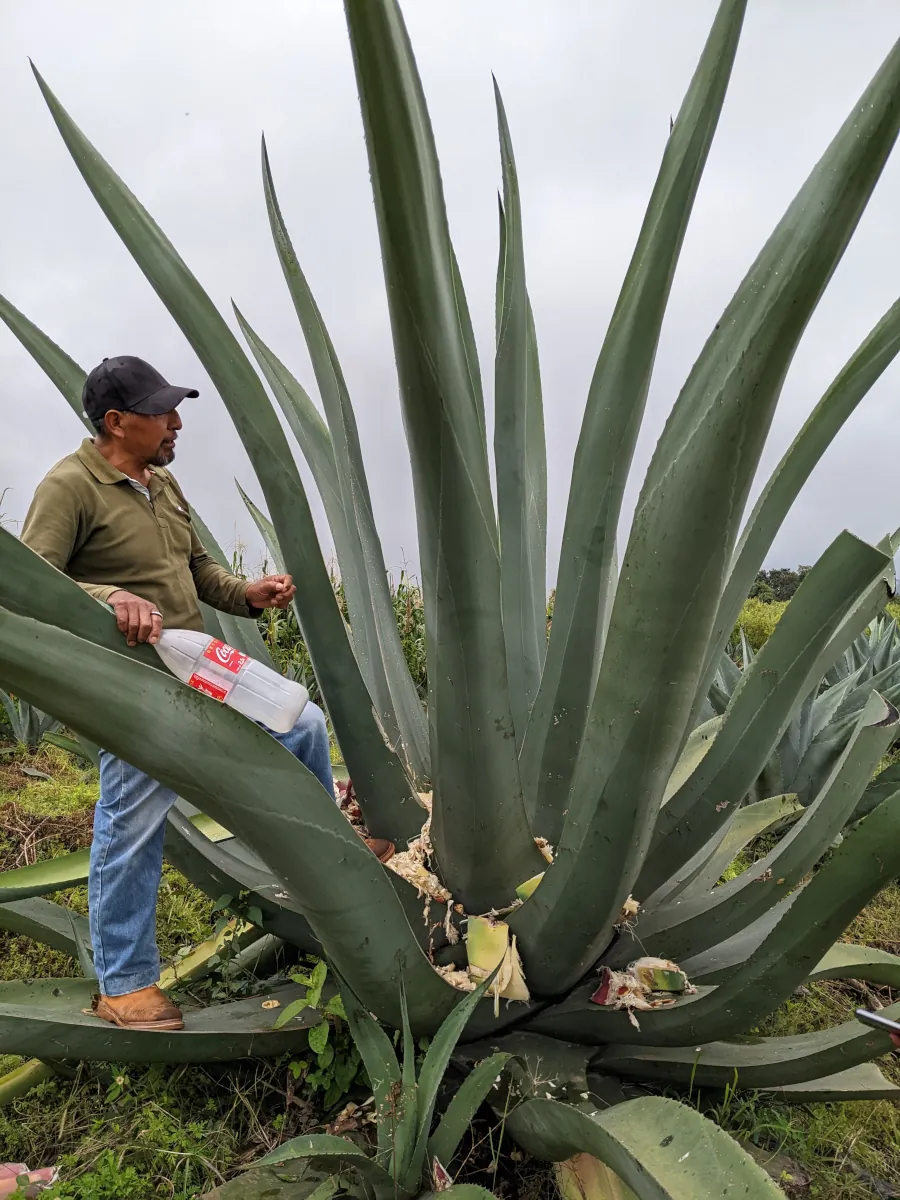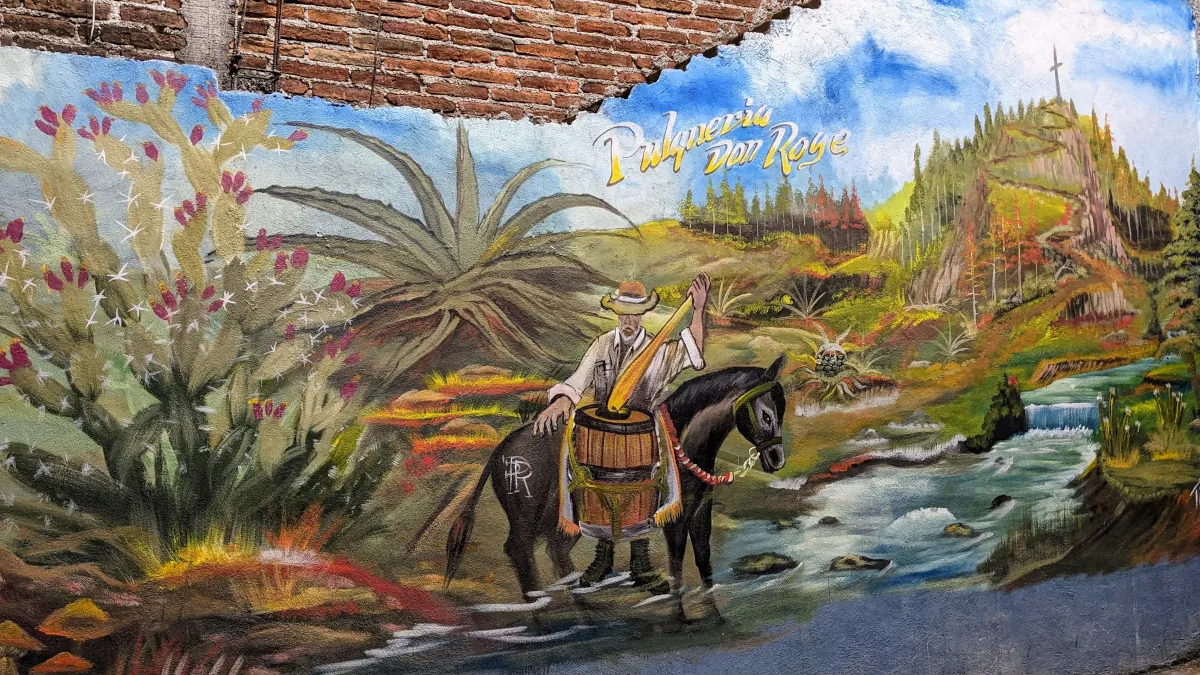A tlachiquero is the person who collects sap, known as aguamiel, from the agave plant, usually to be fermented into the traditional Mexican alcoholic beverage called pulque.
Tlachiquero Mezcal is also the name of a mezcaleria and pulqueria in the Roma Norte neighborhood of Mexico City. The bar serves mezcal and pulque. The bar is named in honor of those who collect the aguamiel.
A Tlachiquero’s Collection Process
The aguamiel collection process involves cutting the flower stalk (quiote) of a maturing agave (maguey) and continually scraping a circular space into the flesh of the core of the plant (piña), twice a day over several months. In Spanish this is known as “raspar” to scratch or scrape. Following each scrape the still-living maguey produces one to three liters of aguamiel. Aguamiel translates to “honey water” and is a sweet tasting, nutrient dense liquid.

The tlachiquero uses a tool called an “acocote” to suck the sap from the center of the plant. Acocotes were traditionally made from large oblong gourds. Today, plastic bottles and hoses are common.
After harvesting the aguamiel it is placed in barrels and carried back from the fields by the tlachiquero, or often a donkey. It is then usually placed in tanks to ferment for a few days to become pulque. This process is sometimes done by the tlachiquero or by someone else, who would be known as a “pulquero” (person who makes pulque).
The maguey will continue to produce aguamiel for several months, after which it dies.
Pulque is most produced in central Mexico, especially in the states of Hidalgo, Tlaxcala, Estado de Mexico and Puebla.
The maguey plants used for aguamiel extraction are huge, sometimes twice the height of a person. There are a few species of agave used by tlachiqueros for pulque, including Agave salmiana, Agave americana, Agave atrovirens and Agave mapisaga. Each of these species are also used for mezcal, along with many others.
Tlachiquero Definition, Translation and Origin
A translation of tlachiquero in English is “a person who collects sap from agaves”. We don’t have this role in English speaking parts of the world so there is no direct translation. There are a few women involved in aguamiel extraction, they are known as tlachiqueras.
The word “tlachiquero” comes from the indigenous language Náhuatl word tlachiquiliztli, meaning “to scrape something”, or “scrapings”.
Tlachiquero Pronunciation
The pronunciation of tlachiquero is “tlah-chee-KEH-roh”.
Using the International Phonetic Alphabet (IPA), the pronunciation of “tlachiquero” would be: /tlaˈtʃikeɾo/

Uses of Aguamiel
If left open to ferment, the aguamiel becomes alcoholic and transforms into pulque. Aguamiel can also be drunk immediately.
Pulque. Pulque is the fermented beverage made from aguamiel. It is slightly alcoholic, ranging from 3%-6%. It is white, slightly viscous and can be slimy or slightly effervescent. Pulque is mostly drunk straight or blended with fruits, vegetables or other ingredients to become “curados”. Pulque is also used as an ingredient, for example in salsas (salsa borracha) and bread (pan de pulque). Pulque has a long history dating back well before Spanish arrival and was used ceremonially by Aztec and other cultures.
Spirits. Pulque is sometimes, but rarely distilled, as in the case of Comiteco from Chiapas. There are some other brands, like Juerte, that make a spirt from pulque. Some mezcal brands are “mezcal de pulquero” but this just means that the mezcal has been made from magueys usually used for pulque, not from the pulque itself. Tequila and mezcal use a different production process which does not involve using aguamiel as a step.
Agave syrup/nectar. Aguamiel can be boiled down into agave syrup. However most agave syrup is processed in a much more industrialized way using the entire agave piña and a diffuser. Most agave syrup is not made from aguamiel.

